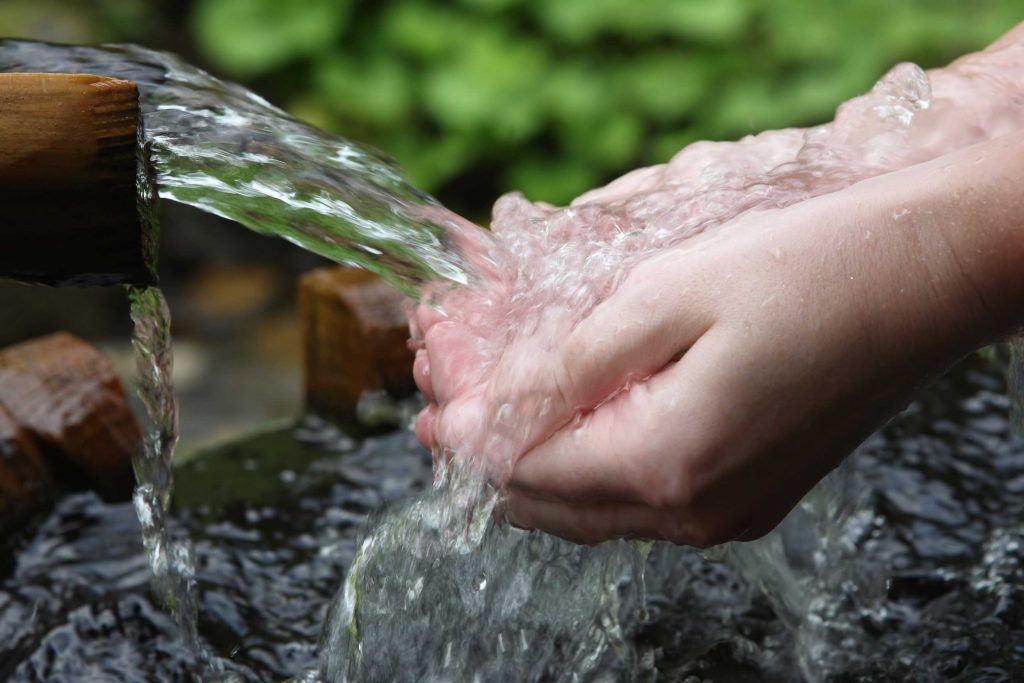Humans have learned throughout their existence that water is the most important thing for survival. A person can go without food for three weeks, but it only takes three days to die without water. This is why natural springs are vital. For example, it is essential to know how to find a spring in the woods if maybe you get lost in them.
However, not necessarily for survival purposes. Even when taking a stroll through some woods, it is a good idea to pay attention to your surroundings and discover what nature offers. It is imperative to sharpen your survival skills, and finding a clean water source may be the most important.

How to Find a Spring in the Woods
When looking for a spring in the woods, you should pay attention to places with high vegetation. Due to the presence of spring water, there will be significantly more vegetation around, like bushes, flowers, etc. Also, you should pay attention to nearby caves as they may also contain springs.
Be observant
When exploring the woods, you should pay close attention to your surroundings, as there will be signs leading to fresh springs. If you notice that the vegetation around you starts to get higher, it is likely a sign that you are close to some water spring.
Springs are most commonly found in thick bedrock, most often limestone. Because spring water is formed underground, it pushes its way up through springs to rise above the ground. Limestone has a soft texture, so the spring water can easily rise through it.
Find vegetation that is much taller and healthier than the nearby plants. Or, in addition to the vegetation, what species of trees are nearby? The more aspens, the better; they are a positive omen.
Look for shrubs and trees that stand out from the surrounding ones, then focus on poking a sharpened, long, thin hardwood stick directly into the ground close to these plants and trees.
Sometimes cedar and willow are also effective. Look for a siege on a nearby hill. You can create a hole with a shovel. You can also try dousing to help you understand the location of the water and the flow’s direction.
Use a backhoe if you are certain where there is water. With a bit of digging, you should be able to get to the fresh spring.
Read more: What Side of a Tree Does Moss Grow On?
What to Do Once You Find a Spring
The closer you get to the water source or the spring, the easier it will be for you to dig in the ground. This is because the ground will be softer due to the presence of water. If you see any maple or oak trees, the ground around them will be softer, and you can try poking it with a stick to check if there is any water.
There will be underground springs if any of the trees I mentioned or higher vegetation. On the other hand, if the woods you are in have caves, you can check them for any opening from where spring may have flowed to the surface.
Can You Drink Water From Springs?
Natural springs are safe to drink from, but it is recommended that you filter the water you collect to be on the safe side. Spring water contains plenty of minerals that dissolve in it as it pushes and moves through the underground rocks to reach the surface of the Earth.
The dissolved minerals in the spring water may give it a certain flavor and even carbon dioxide bubbles. You may also know this as carbonated or mineral water.
Springs have been a staple of human society for centuries for various purposes, including domestic needs, mills, irrigation, etc. If you are in the woods, it is wise to know what signs to follow to find a spring, as you will be provided with a fresh water supply in an emergency.
Types of Spring Water
There are typically two kinds of springs from which you can draw water. Normally, when thinking about springs, they are seen as fissured rock formations on the side of hills.
The simplest springs have a modest collection basin or spring box that may be built to capture the water at the spring’s source.
A seep is a different kind of spring that appears at lower elevations. Simply put, seeps are areas where groundwater from the aquifer filters through the soil and collects to create a tiny pool or a soggy, wet region.
Creating a seep spring takes a lot more work since digging to find the water source. Nonetheless, the effort is worth the result, which is a fresh spring.
Read more: How to Purify Salt Water in the Wild

Why Is Spring Water Important?
Spring water is a cleaner and healthier water source than you would purchase at the store or ingest from the faucet. Additionally, it has a level of minerals that are good for human health. Mineral-rich water often has a pH that is neutral or just barely alkaline.
Alkaline water can help balance the body’s acidity and lessen the amount of damage caused by free radicals. Additionally, it might maintain teeth and bones robust and thick. Discovering a natural spring gives you access to a reliable water supply at all times.
You can take your kids on an adventure in your local woods while teaching them valuable skills they can always use in life. Moreover, it is an excellent family bonding experience.
Conclusion
To know how to find a spring in the woods, you must learn what signs you need to follow. As I mentioned, higher vegetation is a sure sign of the presence of springs. So, look out for bushes, flowers, and general greenery.
Or the presence of oak, maple, or even cedar trees, also indicates the presence of water springs. Once you know the signs pointing out spring’s existence, you can easily locate one in the woods by yourself.
